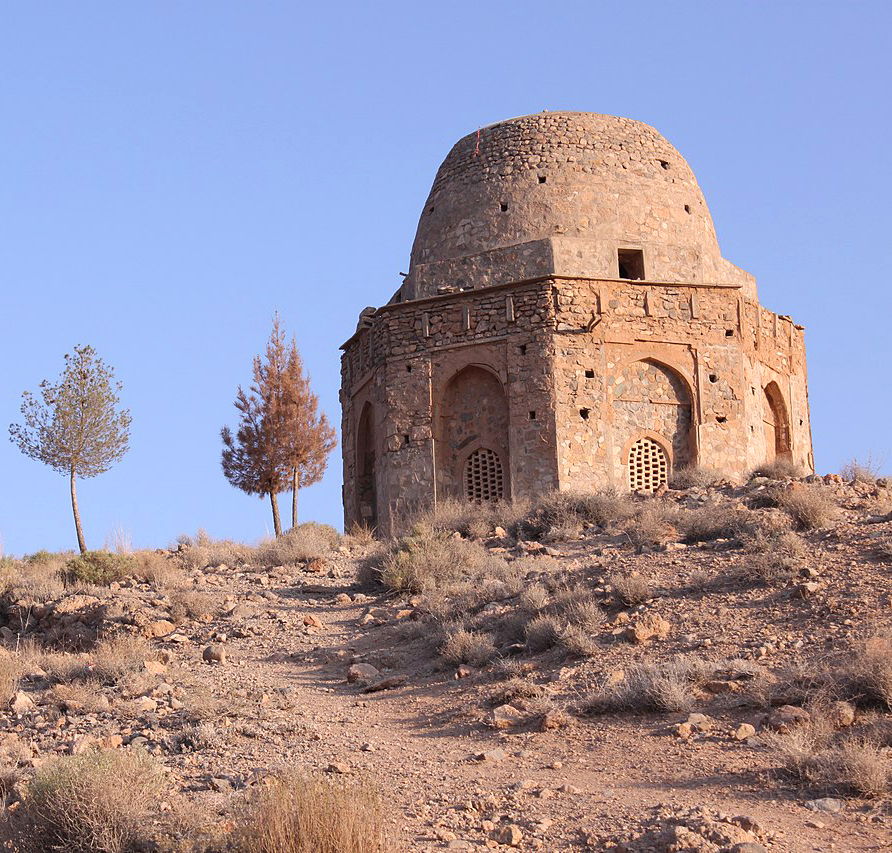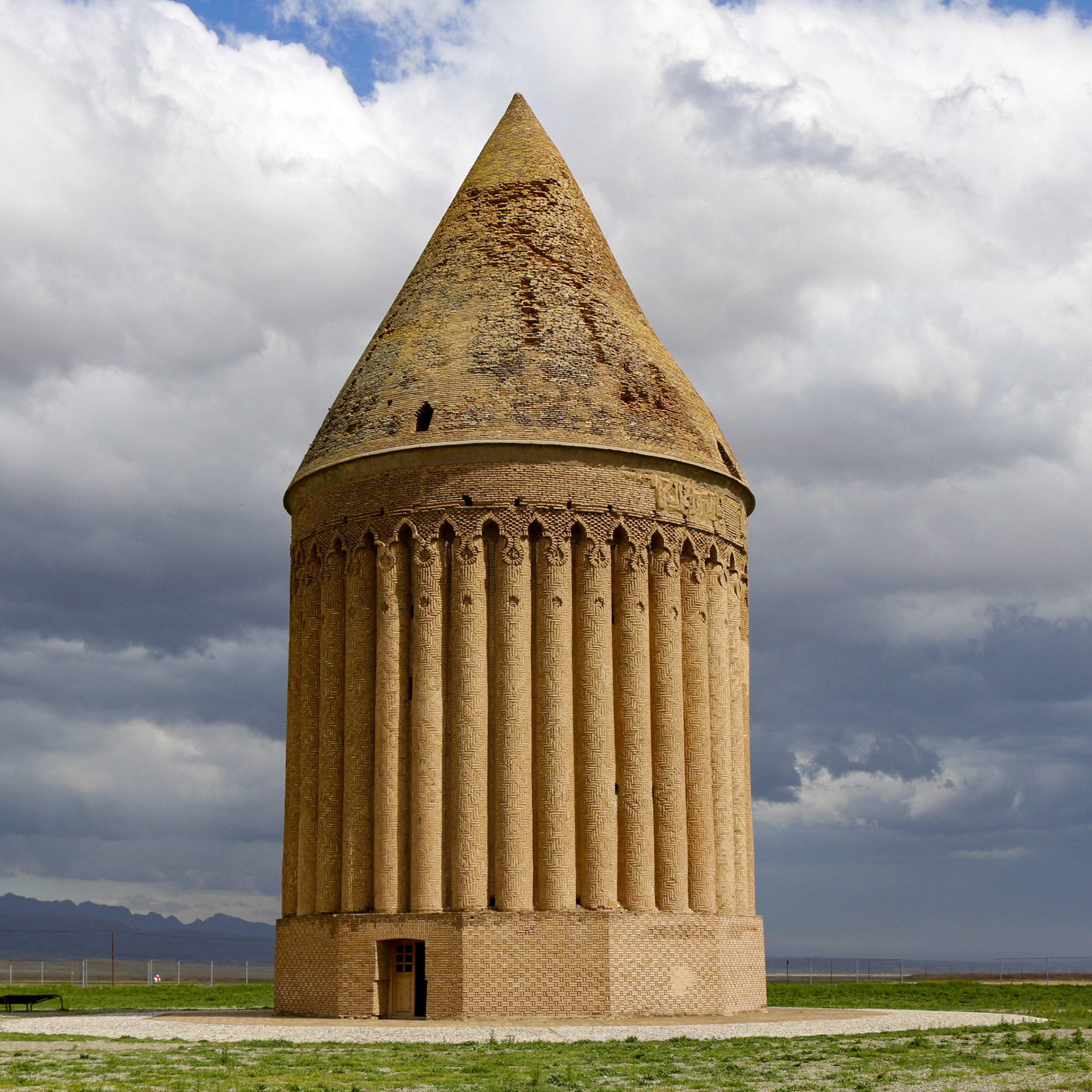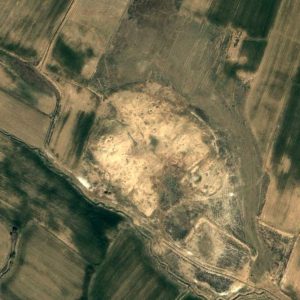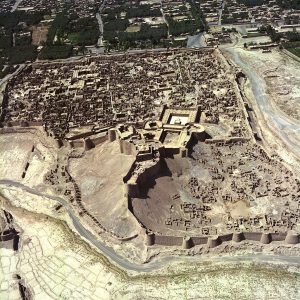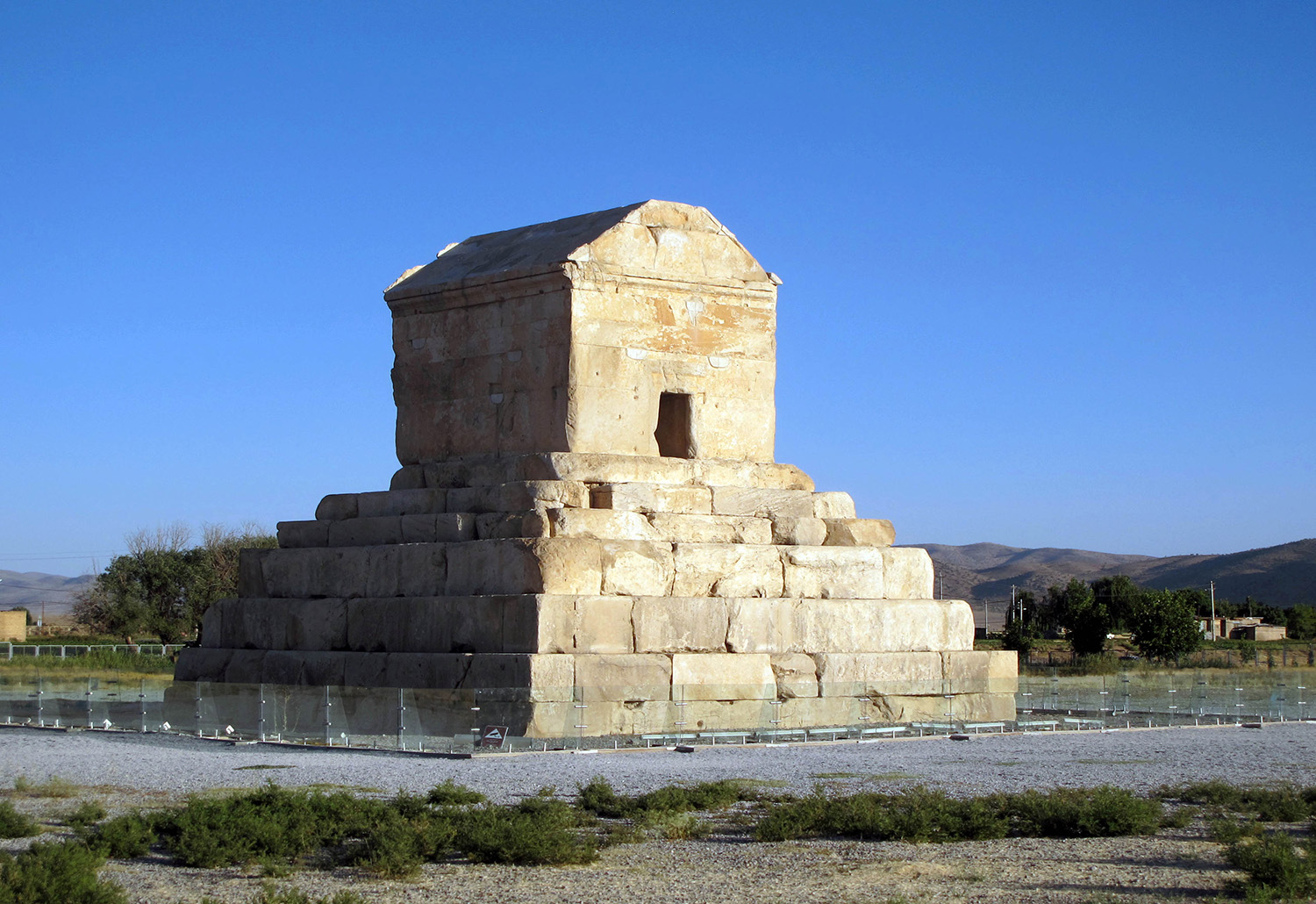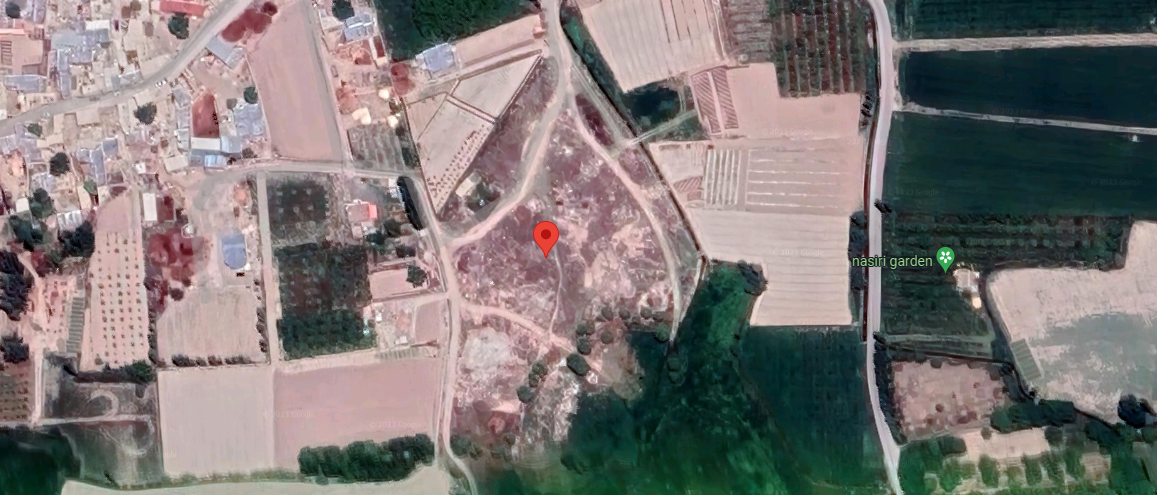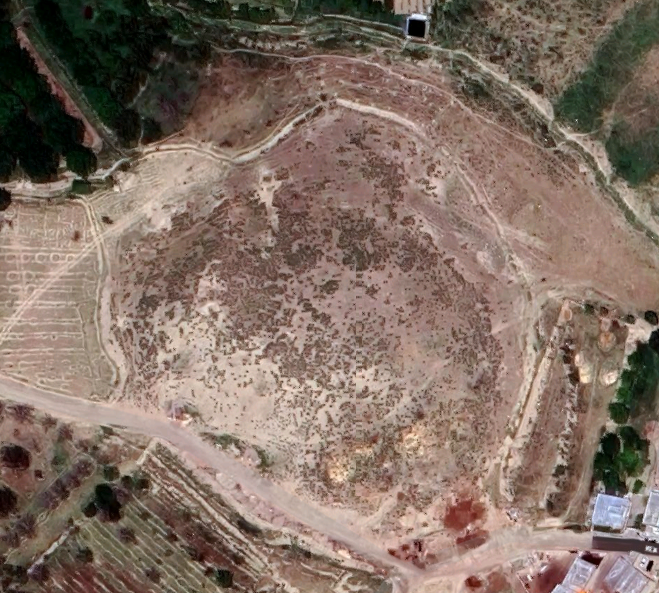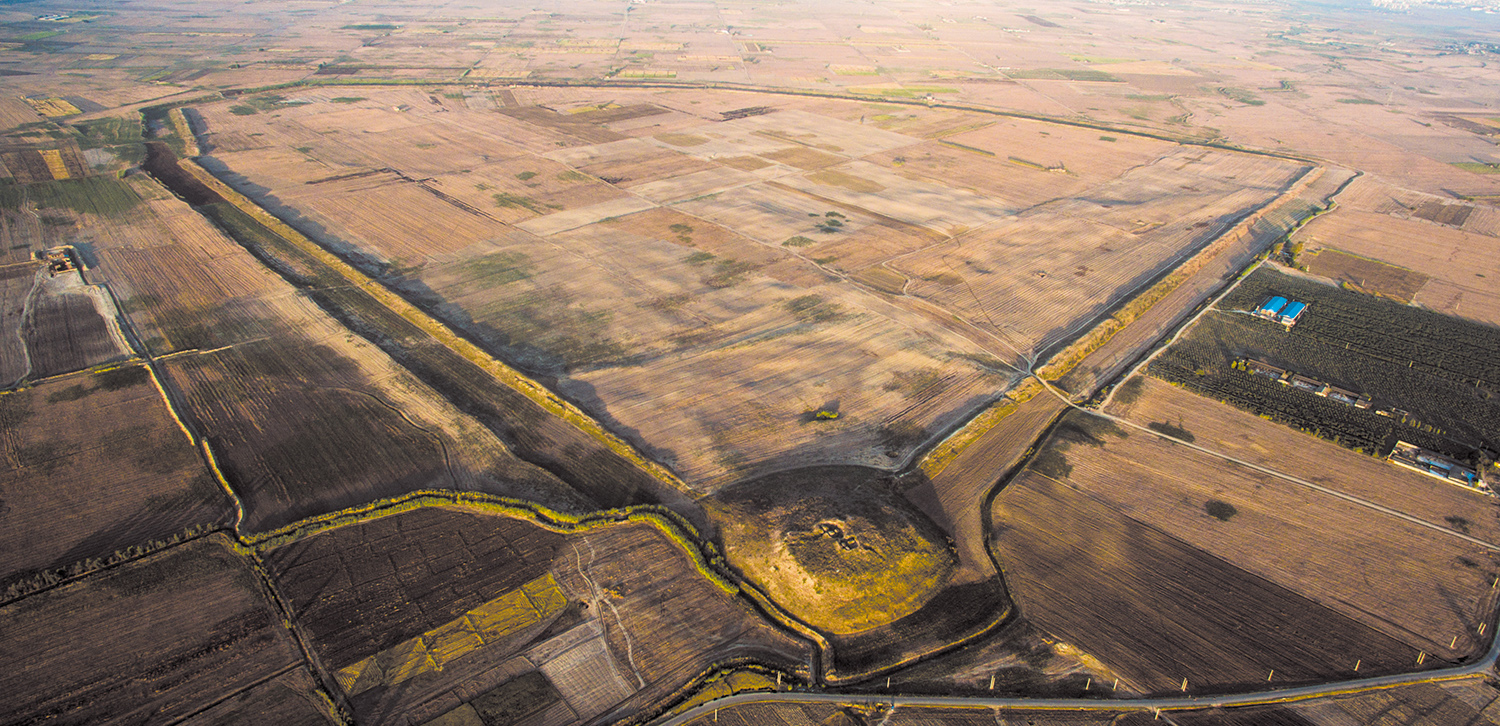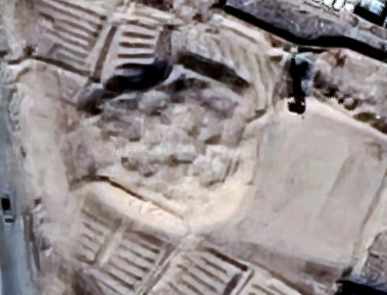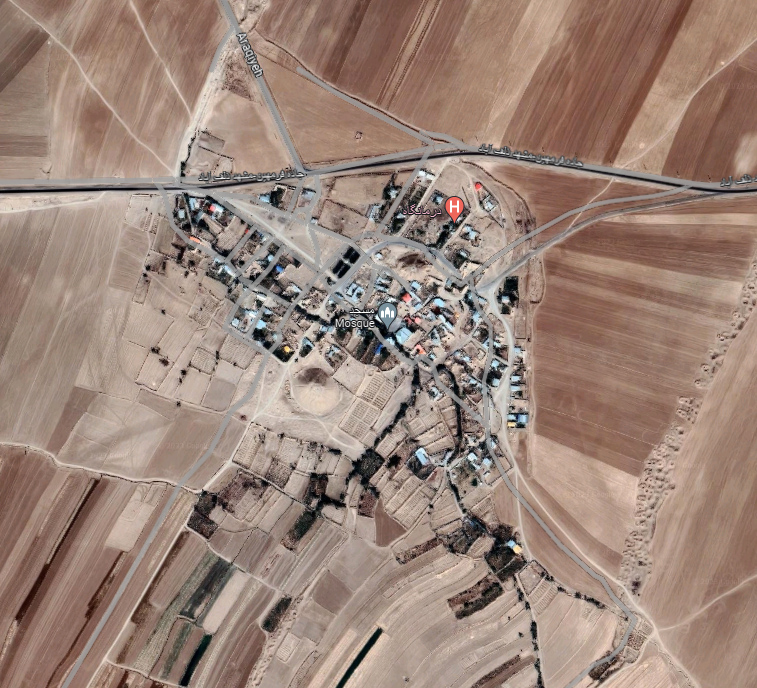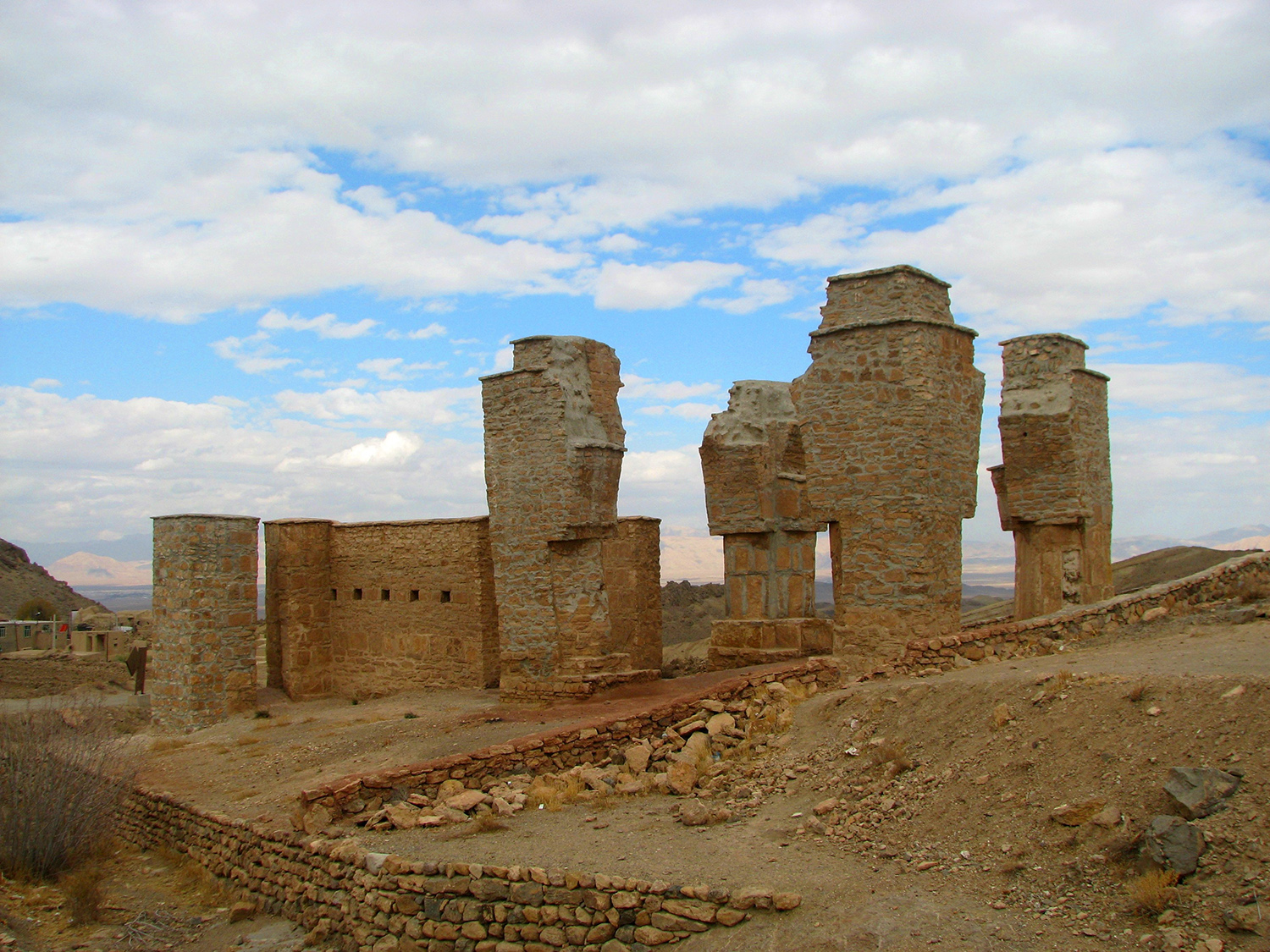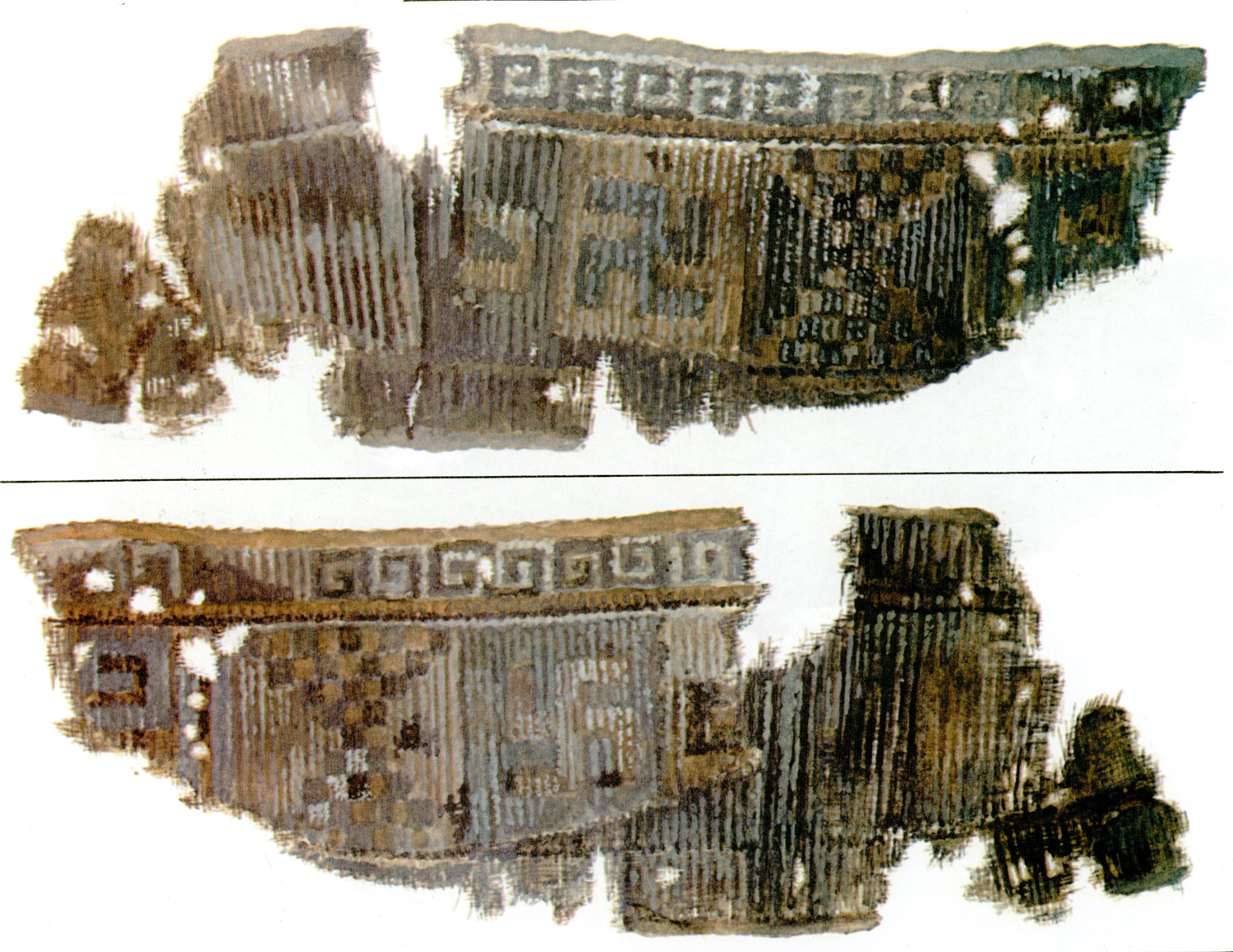Jubajiجوبجی
Location: Jubaji is the name of an archaeological site situated near Ramhormuz, in southwestern Iran, Khuzestan Province.
31°14’54.0″N 49°39’50.5″E
Map
Historical Period
Elamite, Parthian
History and description
Jubaji is the name of an archaeological site 700 m north of a village of the same name to the southeast of the town of Ramhormuz in Khuzestan. The site, largely destroyed by farming activities and stone quarrying, is on the south bank of the A’lā River. The extent of the archaeological site is not exactly known. Still, it appears that the burials were associated with the ancient Elamite city of Hidalu often identified as the present-day Ramhormuz.
The Jubaji tomb was buried under sediment layers due to the A’la River’s frequent flooding (fig. 1) . The main structure, largely destroyed during the pipeline construction, consists of a rectangular stone tomb chamber measuring 4.50 × 2.30 m. A single slab of stone (80 cm × 65 cm) was found amidst the excavated debris from the pipeline channel dug near the northern wall of the tomb. The upper sections of the tomb chamber, along with its western, eastern, and southern walls, had been destroyed. Two bathtub-shaped coffins in bronze were placed parallel to each other in the tomb (fig. 2), with the eastern coffin facing north and the western coffin facing south. Both coffins were found filled with mud, and there were no traces of their likely lids that may have been removed or destroyed.
A few courses of a mud-brick floor excavated adjacent to the tomb chamber suggest that the burial chamber was originally covered with a vaulted ceiling. Similar burial chambers are known in other places such as Arjan and Susa.
The burials contain inscribed gold objects, including a ring inscribed with the name of the Elamite ruler, Shutur Nahunte, son of Indada. This inscription dates the burial to the Neo-Elamite period (585–539 B.C.). The study of the skeletal remains indicates the presence of two related adult female individuals in the tomb, likely princesses from the family of Shutur Nahunte. The burial site seems to have been reused for the internment of terracotta coffins dated to the Parthian period.
Archaeological Exploration
The tomb at Jubaji was found accidentally during the construction of a pipeline in 2007. Several objects coming from the coffins were stolen but recovered shortly after. An archaeological team under the direction of Arman Shishegar began to explore the site on behalf of the Iranian Center for Archaeological Research. The salvage excavation was carried out for two seasons between 2007 and 2012. All recovered artifacts and items were transported to the National Museum of Iran for further study.
Finds
Finds: A large number of funerary objects, some inscribed in Elamite, have been retrieved from the burials and their immediate area (fig. 3). Hundreds of pottery vessels were excavated. Metal objects consist of daggers in bronze or iron with decorated hilts; gold inscribed rings; inscribed armlets with lions’ heads; armlets with rams’ heads and inlaid rosettes; personal ornaments and jewelry in gold including a variety of earrings, pendants, hairbands; necklace; wristlets; brooches. A collection of unique silver objects such as a ceremonial frying pan with the figurine of a seated woman and a kettle; stone beads.
Bibliography
Ahmadinia, R. and A. Shishegar, “Jubaji, a Neo-Elamite (Phase IIIB, 585–539 BC) Tomb in Ramhurmuz, Khuzestan,” Iran, vol. 57/2, 2019, pp. 142-174.
Shishegar, A., Tomb of the Two Elamite Princesses, Tehran, 2015.
Author: Ali Mousavi
Originally published: September 27, 2024
Last updated: January 11, 2025











